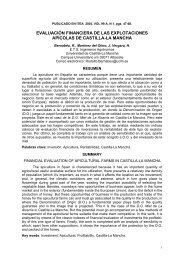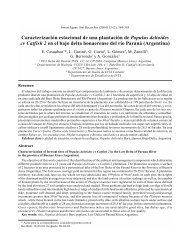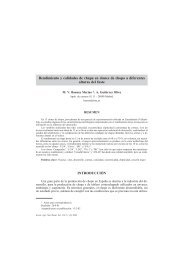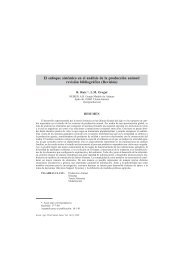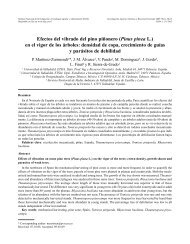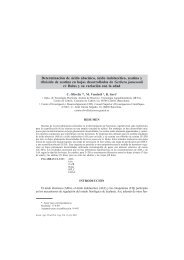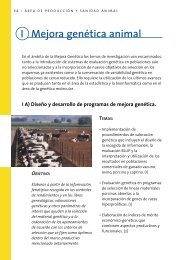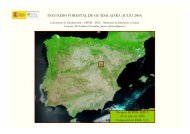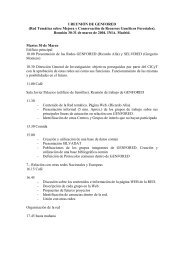Status of medicinal and aromatic plants in - Inia
Status of medicinal and aromatic plants in - Inia
Status of medicinal and aromatic plants in - Inia
You also want an ePaper? Increase the reach of your titles
YUMPU automatically turns print PDFs into web optimized ePapers that Google loves.
122<br />
WORKING GROUP ON MEDICINAL AND AROMATIC PLANTS: FIRST MEETING<br />
80<br />
70<br />
60<br />
Yield (kg/ha)<br />
50<br />
40<br />
30<br />
20<br />
10<br />
0<br />
20 30 40 50 60 70 80 90<br />
Density (<strong>plants</strong>/m 2 )<br />
Fig. 2. Effect <strong>of</strong> plant density on anise (Pimp<strong>in</strong>ella anisum L.) yield.<br />
In another study, weed species <strong>and</strong> the effect <strong>of</strong> some herbicides were identified <strong>in</strong> anise<br />
fields <strong>in</strong> the Aegean region <strong>of</strong> Turkey. The most important species are as follows:<br />
Chenopodium album, C. glaucum, Centaurea cyanus, Convolvulus arvensis, Chondrilla juncea,<br />
Chonr<strong>in</strong>gia orientalis, Coronilla scorpioides, Cynodon dactylon, Euphorbia exigua, Gallium tricorne,<br />
Geranium dissectum, Hypocum procumbens, Lathyrus aphaca, Lithospermum arvense, Polygonum<br />
aviculare, Polygonum sp., Ranunculus arvensis, S<strong>in</strong>apis arvensis, Tragopogon sp., Vicia sp. (Otan<br />
et al. 1993). The effects <strong>of</strong> herbicides used <strong>in</strong> this study varied with years <strong>and</strong> locations;<br />
however the highest yield was obta<strong>in</strong>ed with mechanical weed control methods.<br />
Caper (Capparis sp<strong>in</strong>osa L.)<br />
Experiments were conducted on caper (Capparis sp<strong>in</strong>osa L.) dur<strong>in</strong>g 1991-1993. Several<br />
experiments on germ<strong>in</strong>ation <strong>and</strong> sow<strong>in</strong>g methods were conducted to f<strong>in</strong>d out the best<br />
method to grow caper. Direct seed sow<strong>in</strong>g <strong>in</strong> the field was not suitable. Instead, sow<strong>in</strong>g<br />
non-stratified seeds <strong>in</strong> raised seed beds <strong>and</strong> transplant<strong>in</strong>g seedl<strong>in</strong>gs were the best methods<br />
(Otan <strong>and</strong> Sarı 1994).<br />
In another study made between 1997 <strong>and</strong> 1999, yield <strong>and</strong> morphological characteristics <strong>of</strong><br />
a caper population were assessed. There were significant variations among caper <strong>plants</strong> for<br />
yield (rang<strong>in</strong>g 0-87 g), number <strong>of</strong> primary branches (2-12), primary branch length<br />
(50-164 cm) <strong>and</strong> canopy width per plant (80-260 cm) (Table 1). In addition, there were<br />
significant positive correlations between the follow<strong>in</strong>g characters: yield <strong>and</strong> number <strong>of</strong><br />
primary branches, branch length <strong>and</strong> canopy width. The <strong>plants</strong> <strong>in</strong> the population had three<br />
growth types (prostrate, semi-erect <strong>and</strong> erect) <strong>in</strong> the proportions 51%, 29% <strong>and</strong> 20%,<br />
respectively (Sarı et al. 2002).




